California Trail: A Conversation with Joel Parrott, President/CEO of the Oakland Zoo
- Grayson Ponti
- Jun 29, 2018
- 13 min read
For the past 33 years, Dr. Joel Parrott has led the Oakland Zoo. When he started there, the Oakland Zoo was an antiquated zoo with grossly substandard exhibits and animal husbandry practices. Project by project, Parrott and his team rebuilt the zoo and established it as a leader in animal welfare. Currently, the Oakland Zoo is on the cusp of doubling in size with the opening of California Trail. California Trail also signals a strong commitment from the zoo to insitu conservation, especially of California species and habitats. Here is his story.

@ Oakland Zoo
Prior to directing the zoo, Parrott was a veterinarian by trade. “To make a long story long, I’ve always loved animals my whole life,” he recounted. “I knew in high school that I wanted to be a veterinarian and went to Colorado State University, which had a great veterinary school. While I was there, a guest lecturer talked about wildlife rehabilitation. I thought that was a good idea and wound up doing a preceptorship at the Denver Zoo for four months.” After moving to California and entering private practice, the Oakland Zoo became aware of Parrott and began to use his services on occasion.

@ Oakland Zoo
“Our story is kind of a storied history,” Parrott noted. In 1983, the Oakland Zoo was named one of the ten worst zoos by the Humane Society of the United States as its facilities had fallen into disrepair. “That led them to hiring a veterinarian as assistant director, which was me,” Parrott said. “Then the director was promoted to the National Parks Service so they made me director when I was 32. That was in 1985.” He has served as director ever since (although his title was changed to President/CEO in 2010.)

@ Oakland Zoo
While acknowledging the zoo’s facilities were completely inappropriate, Parrott mentioned the title of one of America’s ten worst zoos was somewhat misleading. “There’s no such thing as the ten worst zoos in the country as there’s no rating system it could be based on,” he noted. “That said, it certainly needed a lot of work. The zoo was underfunded and had a lot of outdated exhibits.” Not only did the zoo needed to change physically but also philosophically. “We centered on animal welfare,” Parrott commented. One by one, the zoo began replacing outdated exhibits with modern habitats. “We had an ocelot in a cage so the first one we did was built the ocelot a new naturalistic outdoor exhibit that would be humane,” Parrott remembered. “Then, we did the baboons as their cage was a too small. Suddenly, both females had babies so we built a naturalistic, expanded outdoor habitat for our baboons.”

@ Oakland Zoo
The first major project done by the Oakland Zoo under Parrott’s regime was the chimpanzee habitat, opened in 1988. “We had two male chimpanzees in a cage,” he elaborated. “Socially they don’t live that way in the wild. We tore down the cage, built an outdoor habitat and gave them females as they could live as they do naturally. They live in a troop so we let them do that. We got the chimps to where they could be happy.”

@ Oakland Zoo
The same process was carried out with the zoo’s other animals. “We did whatever it took to make the animals happy,” Parrott stated. “Up until this point in my career, we stuck to renovating old stuff rather than expanding the zoo. Rather than burning up money on fancy new exhibits, we got rid of the ghettos. That really helped the animals that live here and the public that has to look at it. The public is a very savvy group. They don’t need to be professionals to see if animals are happy or not. They just know it. We’ve always been striving to have our animals well adapted to their conditions.”

@ Oakland Zoo
As the Oakland Zoo got better, its finances also had to get better. “We started fundraising to obtain money to allow us to demolish the old cages and put in something new,” Parrott articulated. “We achieved two things at the same time- we tore out an eyesore and put in something nice.” In 1982, the Oakland Zoo’s operations were transferred from the City of Oakland to the zoological society. However, Parrott arranged for the zoo to get more public funding. “Their contract was underfunded so we went back to the City of Oakland, the original owner,” he explained. “We said if you want us to keep running the zoo, we have to have a partnership. You cannot walk away from the obligation to help fund it. We also obtained regional funding from the Bay Area Park District.” This funding made the Oakland Zoo financially stable.

@ Oakland Zoo
The public-private partnership has enabled the Oakland Zoo to improve. “What really has worked is we’re a public-private partnership where the public side provides the funding and we raise a lot of money from the private sector,” Parrott pointed out. “Since 1990, we have probably raised $120 million from the public and private sector.”

@ Oakland Zoo
In 1989, the Oakland Zoo opened Mahali Pa Tembo, an open, naturalistic habitat for African elephants. “The elephants were in a very small exhibit (the current gibbon island) so we tore that out and built them a one-acre habitat,” Parrott said. Soon after, the Oakland Zoo would dramatically change the way it managed elephants. “In 1991, we were managing elephants in free contact when an elephant killed a handler at our zoo,” Parrott remembered. “My job was to make sure that never, ever happened again in Oakland. It was a very difficult period for us and it was unfair to expose our staff to the risk of being killed again. We became the first zoo to convert our entire elephant collection to protected contact.”

@ Oakland Zoo
By this time, the San Diego Zoo Safari Park and Oregon Zoo had toyed with using protected contact for bulls, a system where animals and humans never entered the same space. “What I decided to do was, rather than just work with bull elephants that way, we would work with all of our elephants that way,” Parrott elaborated. “We provided marine mammal positive reinforcement training to elephant management.” Marine mammal trainers from Sea World came up to the zoo to show the elephant team how to manage animals using only positive stimuli. This involved getting rid of the bullhook, device used to guide elephants, from the Oakland Zoo.
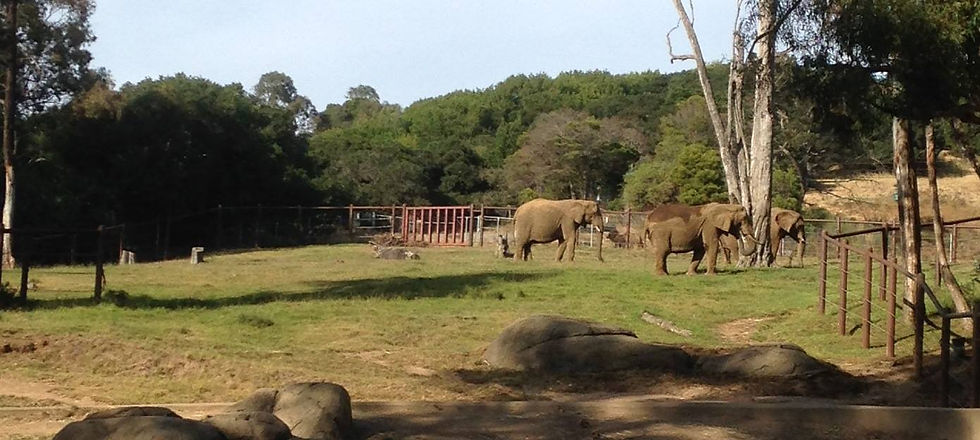
@ Oakland Zoo
“Two very important things came out of that,” Parrott explained. “Once the elephants knew we weren’t going to use the bullhook or require them to do anything and just be voluntary, their stress levels dropped precipitously. As long as our staff followed elephant management policies, no one would ever get hurt again. From a staff safety and animal stress level, it revolutionized how elephant programs went.” Protected contact would be picked up by other institutions over the next two and a half decades. “It took a long time but eventually AZA mandated it,” Parrott added.

@ Oakland Zoo
Eventually, the Oakland Zoo dramatically expanded its elephant habitat. “By 2004, we had four elephants and there was space behind our exhibit in the woods that was a Eucalyptus grove,” Parrott remarked. “We said why not give it to the elephants and expanded that exhibit.”

@ Oakland Zoo

@ Oakland Zoo
To Parrott, optimal animal welfare is essential to justifying zoos. “If we want to have a vibrant conservation program and a vibrant conservation education program, it means we’re trying to have our visitors leave Oakland Zoo caring about animals in the wild,” Parrott articulated. “We can’t justify trying to make them care about animals in the wild if we don’t show tremendous compassion for our animals at the zoo. It’s important to understand we’re here eight hours a day but the animals have to live her 24 hours a day. We have an obligation to provide the best quality of life for wildlife, which means plenty of space, social structure, great food and lots of things for them to do.”

@ Oakland Zoo
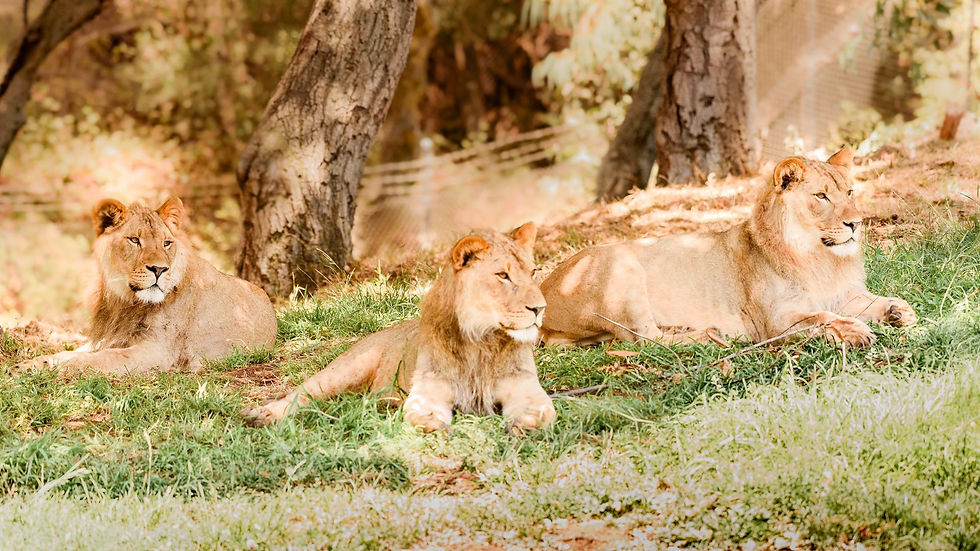
@ Oakland Zoo
Animal wellness at the zoo improved with the rise of animal enrichment. “Animal enrichment takes a lot more staff and extra food materials to keep the animals in their lives,” Parrott continued. “Bears, for instance, don’t have to forage for food anymore so we make it so they have to forage for their food at the zoo. What we really want is for the animals to be happy. That is not anthropomorphic. Animals can be happy, sad, angry or fearful. When you strive for animals to be happy, you’re doing animal welfare.”

@ Oakland Zoo
In the early 1990s, the Oakland Zoo became involved in field conservation. “We started really early on with conservation projects around 1990 to 1995,” Parrott stated. “They’ve been growing ever since. Our goal is that if we have a species in the zoo, we are supporting them in the wild. Because we had elephants, we started supporting the Amboseli Elephant Trust with Cynthia Moss. We have lions so we support the Ewaso Lion Project. We have chimpanzees so we support ranger patrols in Uganda. We support the Lubee Foundation for bats. It’s important that everyone feels if you visit the Oakland Zoo you are contributing to animals in the wild. The conservation piece is really the bottom line of zoos.”

@ Oakland Zoo
Education has also grown during Parrott’s tenure. “We didn’t have an education department when I started,” he recalled. “We just had volunteer docents. In 1986, we hired our first director of education and now we have 18 employees in education. They teach classes, run overnight camps and do outreach into the community. We do all different kinds of programs.”

@ Oakland Zoo
The Oakland Zoo continued to add a number of new habitats including gibbon and siamang islands, Simba Pori (a spacious, naturalistic habitat for lions) and a valley for Malayan sun bears. “The sun bear exhibit was a renovation of an abandoned hoofstock yard,” Parrott noted. In 1998, the Oakland Zoo opened African Village, its first multi-species zoogeographic exhibit. “The African Village was a next step for us in the master plan as it called for organizing our animal collection into themes,” Parrott explained. “We had woods outside of the fence line where we moved our elephants as it had the most space available. We brought all our African wildlife out there.” Unlike previous exhibits, African Village would incorporate architecture and cultural motifs similar to those found in the region.

@ Oakland Zoo
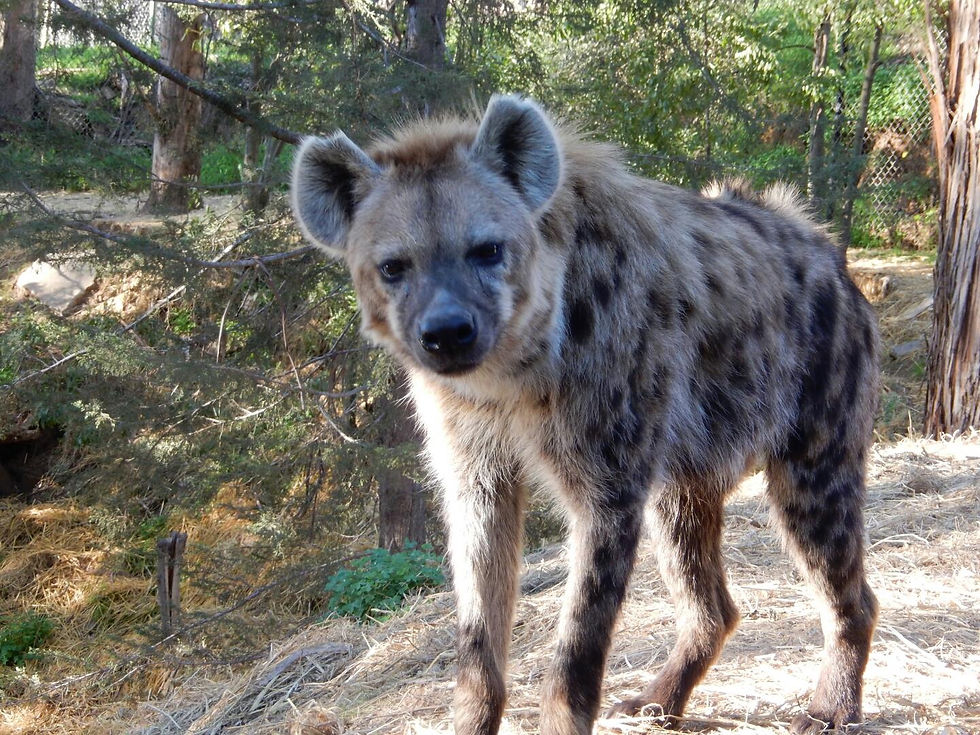
@ Oakland Zoo
Parrott and his time took advantage of the topography and climate to replicate the environment of African animals. “We have a climate that’s very similar to South Africa where you have a rainy season and a prolonged dry season,” Parrot explained. “African Village reflected a focus on the plants and animals of Africa- spotted hyenas, zebras, green monkeys, hyrax, meerkats, savanna monitors, birds, warthogs. We tried to show the incredible biodiversity of the African savanna and washed it with architecture from rural Africa.”

@ Oakland Zoo

@ Oakland Zoo
In 2005, the Oakland Zoo opened the Valley Children’s Zoo, often considered one of the best in the nation. “The children’s zoo was meant to incorporate nature play into the zoo,” Parrott remarked. “We tried to think like three to eight-year old kids. The concept of going from exhibit to exhibit is an adult experience. Kids are a different thing entirely. They need to be interacted and occupied.”

@ Oakland Zoo
As a result, the children’s zoo put interactive play elements adjacent to animal habitats. “We’d have the otter exhibit and the adjacent otter play area, the insectarium with insects for them to climb on and alligators with sand next to them with the kids could uncover an alligator,” Parrott stated. “We added different interactive experiences that made it an activity. We chose the collection to be some of their favorites- bugs, snakes, alligators, goats, sheep and otters. It’s the only part of the zoo where people can touch animals. That gives them a meaningful, emotional experience of animals so they’re not afraid of them.”
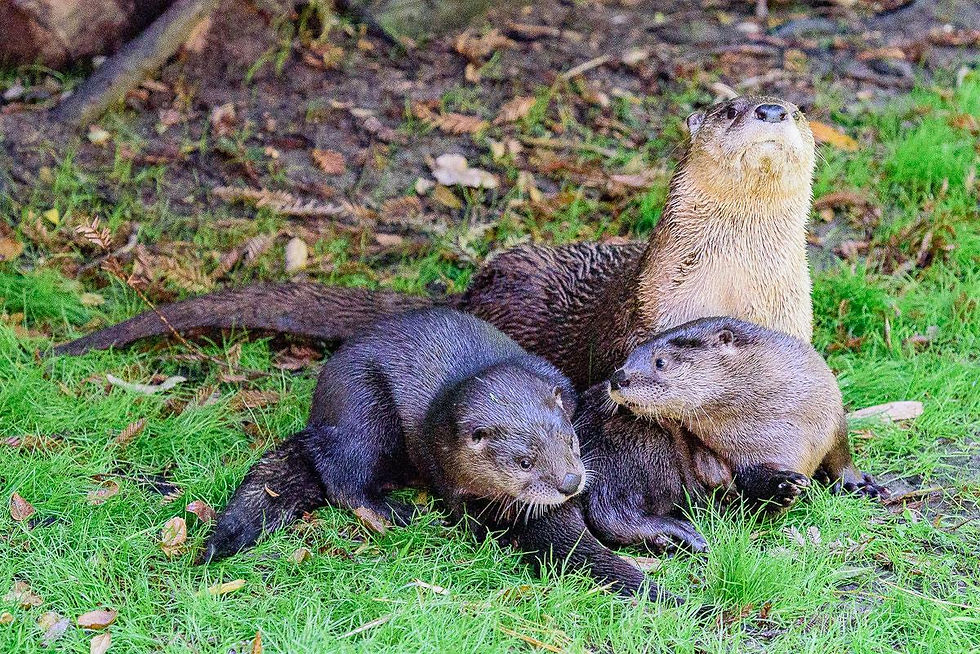
@ Oakland Zoo
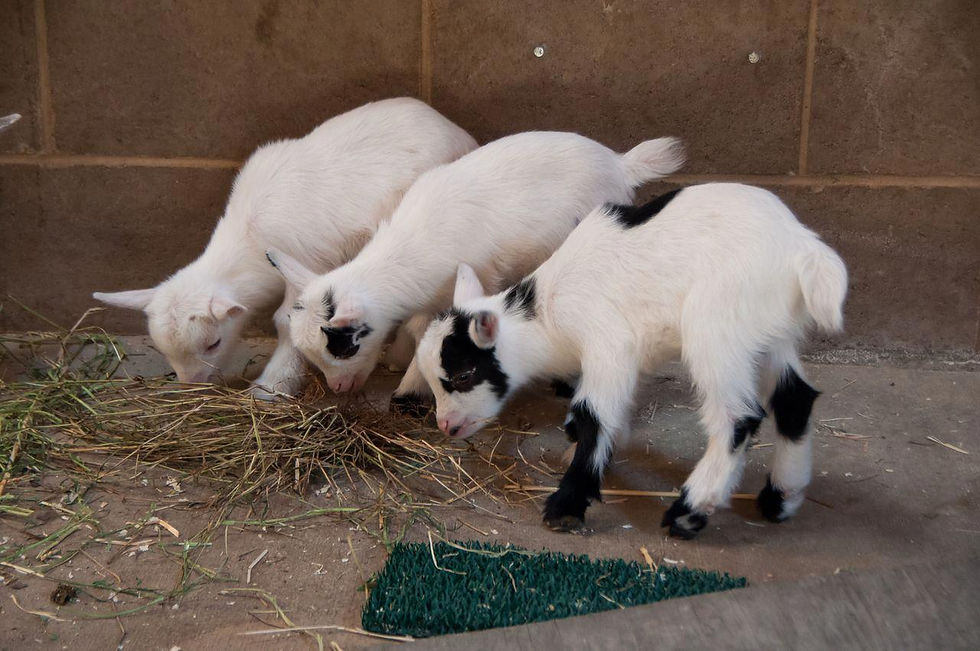
@ Oakland Zoo
“There’s a developmental theory that our core values are developed from the age of three to five,” Parrott continued. “If there is any age group we want to help develop [environmental] values, it’s that age range. We want their values growing up to be close to nature and wildlife. We really zeroed in on that age group to make [the Valley Children’s Zoo] fun, engaging and interactive so when they’re our age they have a warm memory of that period of time where they went to the zoo.”
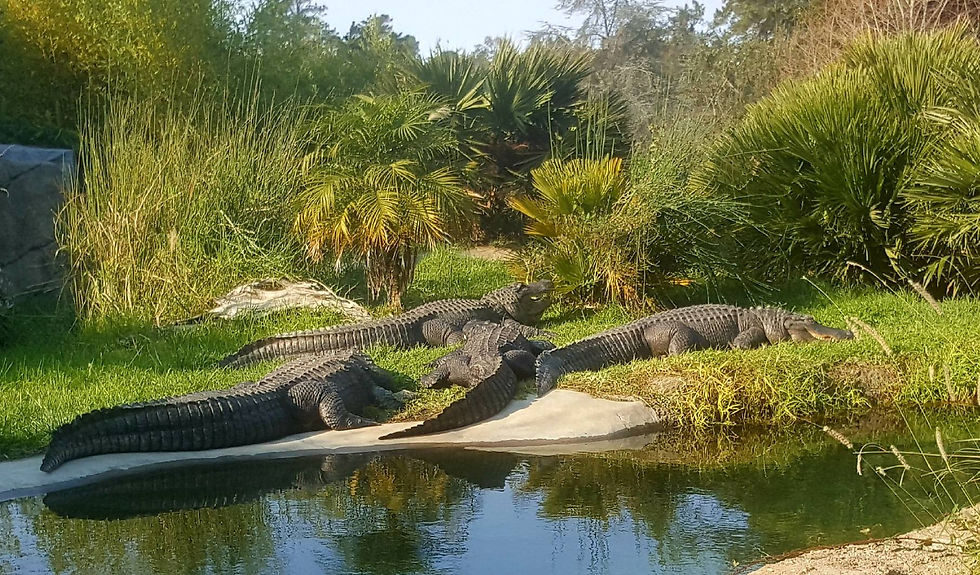
@ Oakland Zoo
Parrott saw zoos as being essential for forging empathy for wildlife. “If we’re going to save wildlife, it’s not going to be based on scientific studies but on emotional connections,” he articulated. “You can be confronted with a lot of data, facts and trends but, if you don’t emotionally connect, it’s meaningless.”

@ Oakland Zoo
The Oakland Zoo has taken measures to show its exemplary animal care to the public. “We like to show people behind the scenes as we do so much with animal welfare and enrichment,” stated Parrott. “The more we can show behind the scenes, the more guests can appreciate the kind of compassion it takes to care for the most magnificent animals on the planet. We have an obligation to our guests, too. We had to invest in renovating our restrooms and food service so the quality of our dining experience is better. You can’t have a drab, poorly lit restroom and have guests want to come back. We want them to come back so they can further support the conservation programs we’re pushing for.”
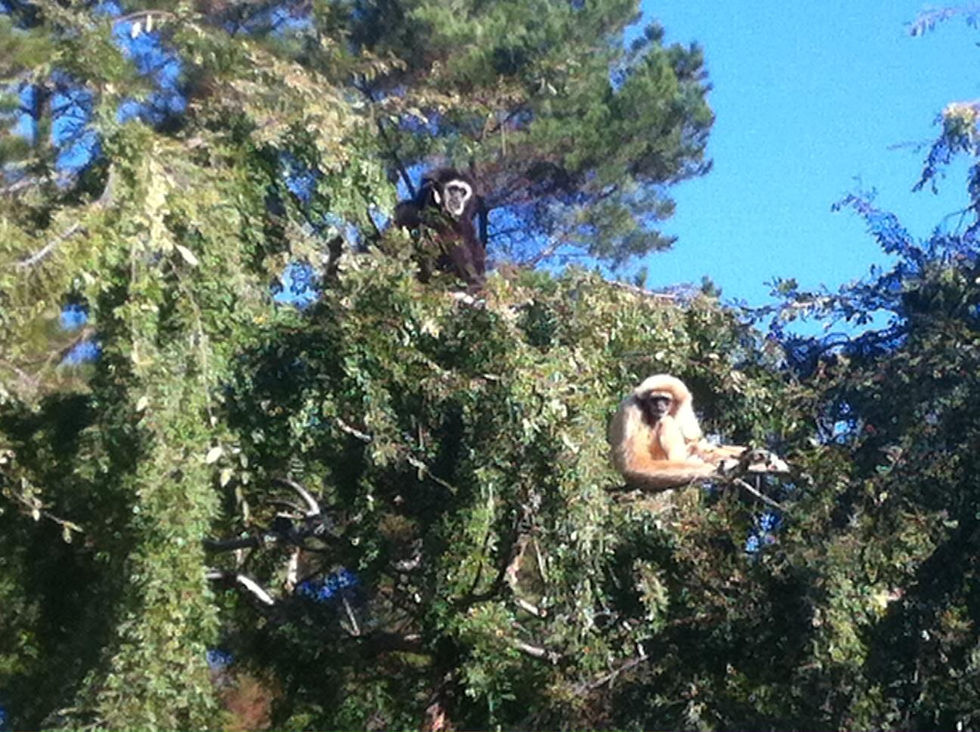
@ Oakland Zoo

@ Oakland Zoo
Ever since early in his time at the Oakland Zoo, Parrott has wanted to do an area focused on species from California. “California Trail is an interesting story,” he recounted. “In the early 1980s, the community didn’t know what to do with the zoo. it was collapsing and it was going to cost a lot of money to rebuild so they formed a blue ribbon committee to discuss it. One city councilmen said there’s this Oakland museum focused on California art so we should have this zoo California focused. We agreed if we had a rainforest and savanna area, we had to have an area on California wildlife and talk about the biodiversity and history of California. The committee agreed we would include it in a master planning process. From that community group came the direction to include some of California’s wildlife [in the zoo.] It was a sign to zoo staff to develop an area of the zoo themed on California. It turned out to be a great decision as we had to expand the zoo but could do it focusing on the enormous biodiversity of California.”
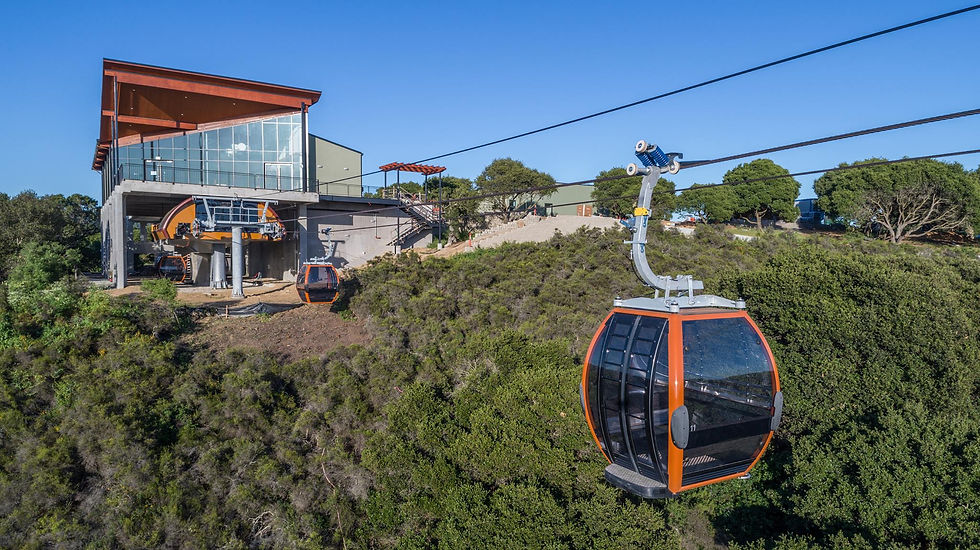
@ Oakland Zoo
For decades, the Oakland Zoo worked on acquiring the land and resources to build California Trail, an $80 million project. “One very important point is California has been called one of the 25 greatest biodiversity hotspots under population pressure,” Parrott elaborated. “We’re the second most biodiverse state in the U.S. after Hawaii. We have such a diverse landscape- desert, coasts, mountains, redwoods, the central valley. All of these are part of rich volcanic geologic history. The story of conveying we are one of the biodiversity hotspots in world is a message we want to get across. That set the stage for the species in the area.”

@ Oakland Zoo
When it opens in June 2018, California Trail will feature grizzly and black bears, jaguars, mountain lions, gray wolves, bison, California condors and bald eagles, all animals that currently or historically live in California. “Four of the species were California natives extracted from the state- the grizzly bear, the bison, the jaguar and the wolf,” Parrott mentioned. “One has come back, the wolf. A central theme [of California Trail] is that these are California natives that can’t be in our own state anymore. We have a grizzly bear on our flag but no grizzly bears. The grizzly bear, wolf, jaguar and bison hadn’t been allowed to come back to our state.”

@ Oakland Zoo
“Each one [of the animals in California Trail] carries a magnificent conservation story,” Parrott articulated. “There were formerly 30 million bison in North America and they went down to 800 animals. Conservation brought them back from the brink of extinction. Black bears and mountain lions are examples of human-wildlife conflict. The question is how do we live with wildlife. Those are the main stories of the animals that represent the natural history of California.”

@ Oakland Zoo
When designing California Trail, the Oakland Zoo took advantage of its landscape and space. “Habitat design was very easy as we had 25 acres to work with that provided plenty of species,” Parrott elaborated. “This is a climate these species have all evolved in. Bison once lived from California to the Florida Panhandle so they’ve evolved to have their coats and behaviors naturally acclimated to California. These are California species in a California climate and setting.”

@ Oakland Zoo
A number of conservation projects will correspond with the opening of California Trail. “I want us to plunge deeper into conservation fieldwork,” Parrott remarked. “We have a couple of very exciting programs. One is the California condor recovery program where we provide veterinary services. The second one is an effort to reintroduce American bison to the American west. Through captive breeding, there is hope bison, our national mammal, can come back to the west as free ranging wildlife. There have to be places where bison can be free roaming.”
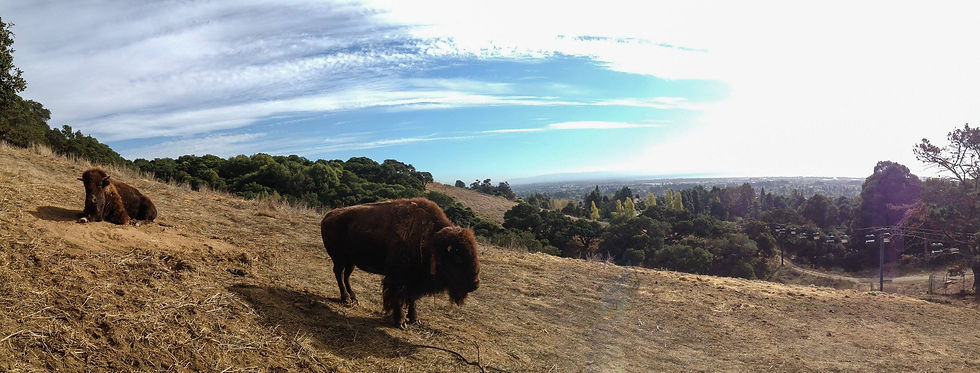
@ Oakland Zoo

@ Oakland Zoo
The East Bay Zoological Society recently changed its name to the Conservation Society of California. “We wanted to put conservation right out in front of our mission,” Parrott articulated. “We actually changed our legal name as we are no longer just East Bay anything. We have members in Reading and San Diego and have so many field conservation projects around the world. We are no longer a nonprofit organization just to serve the Oakland Zoo. if our purpose and self-image is we are a conservation society supporting field projects, habitat preservation and rangers in Uganda, we are more than a zoological society. We wanted to put the word conservation right up front as that is who we are. We changed our name to the Conservation Society of California to reflect our purpose and members. It is a much more accurate representation of who we are.”

@ Oakland Zoo
Once California Trail is finished, the Oakland Zoo will look at updating some of its existing habitats. “The next step for us is we’ve been working off of a living document that’s our master plan and we’re going to do a new master plan that looks at what needs to be removed,” Parrott explained. “The first one is going to be chimpanzees. We’ll do a new habitat for them and have a deep commitment to providing for our chimpanzees. We also want to expand our tiger exhibit. It’s an exciting time to go through that process to discuss what options we have and themes we would like to do.”

@ Oakland Zoo

@ Oakland Zoo
“I think zoos of the future will be more expansive and naturalistic and have fewer species so animal welfare can continue to improve,” Parrott concluded. “That’s something the zoo professions needs to do to move forward. We’re showing we care and are going to work harder to provide better lives for our animals here. I’m very proud of California Trail as it’s unfolding as well as our elephant program and the new veterinary hospital we built.”

@ Oakland Zoo






Comments